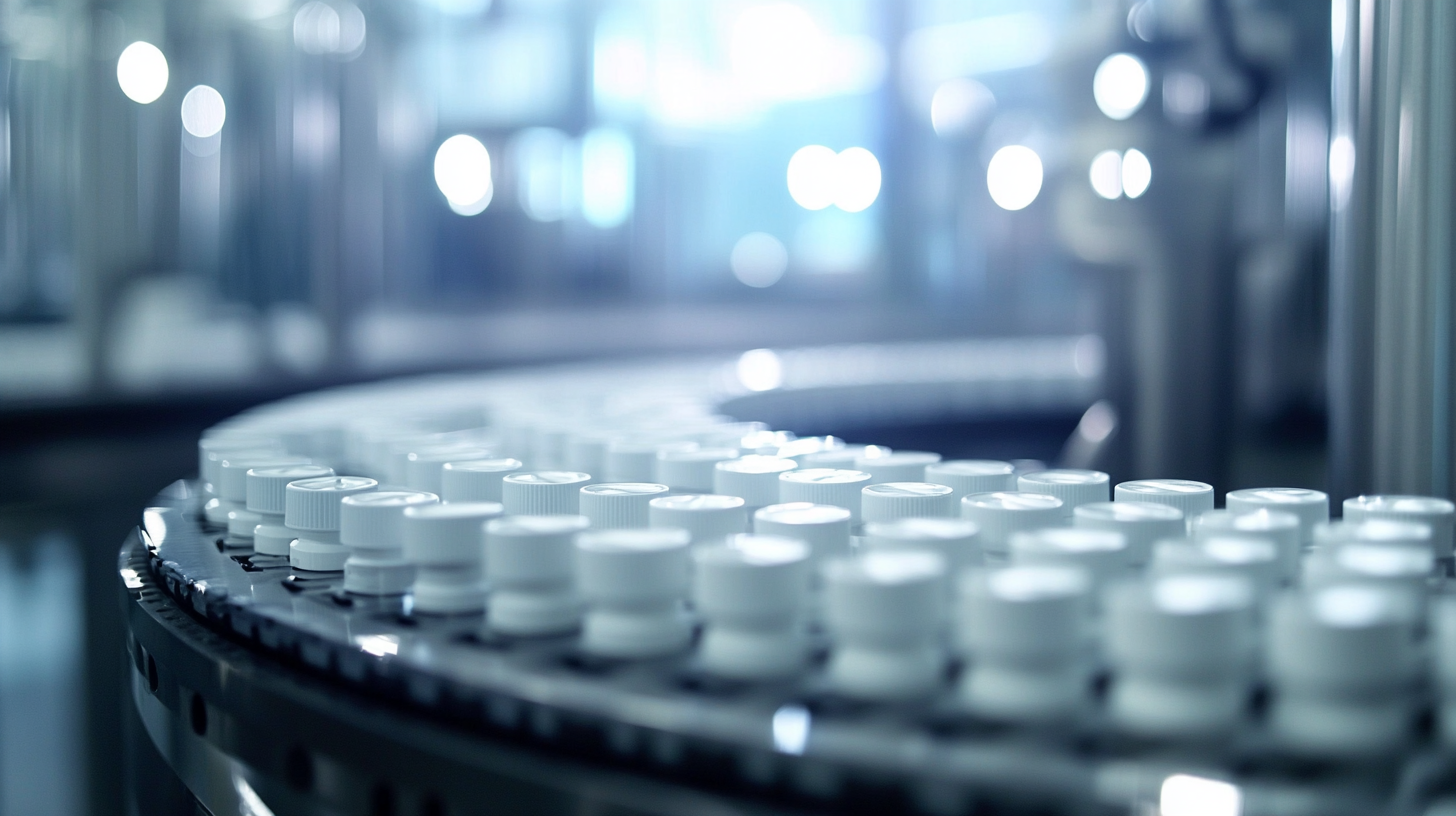This drug product development process is a convoluted, multifactorial road fraught with challenges that global buyers usually face when untangling the intricate nature of the pharmaceutical landscape. With increasing demand for innovative and effective therapies, knowledge of the nuances surrounding this process becomes critical. Interestingly, each stage of development-from regulatory compliance to market access-comes with its own unique challenges, which can, in turn, affect timelines, budgets, and finally, the ability of a product to succeed in competing markets.
In contemporary times, where globalization is the driving force behind competition and cooperation, drug product development is no longer a pancake-this is now a worldwide pancake. The blog will shed light on various challenges faced by global buyers in the drug product development process and solutions to these challenges to ensure that the development efforts thrive. Our aim is to give stakeholders an idea and best practices so as to further understand how they can make their way through this complex process and, in turn, maximize the chances of getting life-saving medicines to patients worldwide.

Awareness of these buyers and sellers in drug product development on a global scale is necessary for navigating the complexity of the industry. Recently, it was reported that by 2023, the global pharmaceuticals market is expected to cross $1.5 trillion due to increasing healthcare needs and biopharmaceutical developments. This growth reaffirms that understanding regional regulatory environments, market access pathways, and competitive dynamics of different territories are significantly important, as these factors can speed up or slow down the drug product development timeline and cost efficiency. Regulatory compliance stands as a key element of the global drug development process. According to the WHO, delays in more than 50% of drug development projects can be attributed to regulatory issues. This implies navigating the myriad requirements of the FDA-U.S. Food and Drug Administration-and the EMA-European Medicines Agency-sometimes can prove to be the biggest challenge for the developer wishing to attain approval in various markets. Buyers need to be acutely aware of these discrepancies in regulatory expectation in order to minimize risks and streamline their development process. The increasing value of advanced analytics and digital tools cannot go unmentioned in drug product development. According to another recent study by Deloitte, organizations implementing advanced analytics could cut their drug development costs by as much as 20%. This figure stands testimony to the urgency of global buyers embracing innovative technology for enhanced project management, predictive modeling, and strategic decision-making, thereby maintaining their competitive edge in the drug development life cycle.

The trip through the drug development ecosystem becomes even more agonizing when global buyers find themselves battling innumerable concurrently run challenges. One major headache is the highly complicated area of regulatory compliance among countries. Each country has its own set of stiff regulations ranging from the development to marketing phases; with every new development, the regulations change and produce substantial delays and cost hikes. Global buyers have the responsibility to meet the product standards of the specific market, requiring them to understand local requirements very well.
Another major difficulty in the world today is the uncertainty of supply chains. Global buyers tend to work with a network of suppliers and manufacturers scattered across the globe, creating points of weakness. Geopolitical disturbances, natural calamities, and pandemics can all affect the supply of instruments or even of final products. Buyers must, therefore, have sound contingency plans to address such risks and sustain a reliable flow of their drugs to market.
The dramatic pace of change can also disadvantage the global purchasers developed in drug development. Every day brings new technologies and methodologies, and being cognizant of these advances is indispensable. Buyers must weigh whether to spend in new solutions or stick to more conventional ones. It is critical to balance beneficence, solidity, innovation, and reliability for product development in a fiercely competitive global market.

There has been a major change in the pharmaceutical environment whereby global buyers tend to focus on streamlining the drug product development process. In turn, this focus helps improve efficiency and accelerate the time-to-market so that patient needs may be met. It should be noted that a thorough understanding of this multi-faceted process will allow stakeholders to navigate through challenges in an effective manner.
Collaborative working across function teams should be regarded as one of the foremost strategies to enhance the drug product development process. Enabling collaboration among different departments such as R&D, regulatory affairs, and quality assurance from the very beginning will allow the company to anticipate potential bottlenecks ahead of time. Regular communication and feedback loops create a more agile environment for these teams to react quickly and make the best-informed decisions.
Modern technology leverage also optimizes development workflows. Data analytics and project management tools help set up real-time tracking of progress and hurdles to keep every team member aligned toward project goals. Automation for testing and documentation tasks reduces human error and saves valuable time in transitioning between development stages.
Regulatory intelligence is another critical focus area. Staying current with global regulatory requirements helps teams foresee potential challenges and adapt strategies accordingly. A proactive approach to regulatory compliance ensures that the development process remains on track, averting unexpected regulatory hurdles that could trigger delays. These pathways will help global buyers navigate through complexities in drug product development to get products into the market.

Any considerations from the regulatory framework affect international drug product markets quite significantly, especially as globalization takes an ever-increasing toll on virtually all pharmaceutical transactions. As the global pharmaceutical market is expected to grow to $1.5 trillion in 2023, any buyer hoping to come to terms with this increasingly complex regulatory maze must know something about the regulatory frameworks set for drug approval and distribution. For example, the United States, European Union, and Asia-Pacific regions have developed particular regulatory parameters that in turn direct the standards of efficacy, safety, and quality for drug products, thus setting different barriers in terms of access into these markets.
As a case example, the NDA process in the U.S., as run by the FDA, usually poses serious challenges for international buyers. According to IQVIA, about 50% of drug candidates are not approved by the FDA, and regulatory hurdles remain one of the top reasons for rejection. Conversely, the EMA route for centralized evaluation, therefore, would facilitate less burden generically; however, it still requires loads of other data, scientific and clinical, the generation of which is not always as easy for companies operative across so many jurisdictions.
In addition, emerging market characteristics add more regulatory challenges to drug approval processes. WHO is now witnessing a trend toward regulatory harmonization aimed at simplifying processes and assuring drug quality across regions, for example, through the establishment of the African Medicines Agency. However, buyers must remain aware that lack of regulatory enforcement uniformity and local requirements can create significant delays in entry into the market. Companies also need to invest upfront in understanding the global net and local regulatory landscapes so they can make due preparations for compliance since this is the only way such compliance guarantees the overall success of drug product development and market access.
Buoying through all these differences, they face problems that are supposed to be solved through collaboration among different perspectives. This is because a huge part of the pharmaceutical industry, reckoned to spend more than $1.5 trillion in 2023, is designated to develop new drugs. But the Tufts Center for the Study of Drug Development puts the time it takes to launch a single drug into the market at more than 10 to 15 years, costing over $2.6 billion. Long time intervals and the high costs associated with it discourage the spirit of innovation besides shutting out prospective solutions for global buyers.
Thus, collaborative strategies in the forms of collaboration between pharmaceutical companies, CROs and academic institutions have come to the fore as crucial strategies to solve it. Deloitte's 2020 report underscored that companies that adopted collaborative models improved speed to market for their products by 20%. They argue that, with the pooling of expertise plus resources and risk-sharing approaches, development processes would not be streamlined for facilitating product quality and compliance with international standards.
In addition, the upcoming digital technologies such as AI and machine learning will make collaboration ever better. According to a report by McKinsey in 2021, tools driven by AI can fast-track the developments in a particular firm by an average of 30% through giving the teams opportunities to analyze their precious data and make good decisions more quickly. While global buyers weave their ways through the thick mazes of drug development, a great deal of collaboration culture will prevalent in overcoming challenges and innovating within a competitive marketplace.
